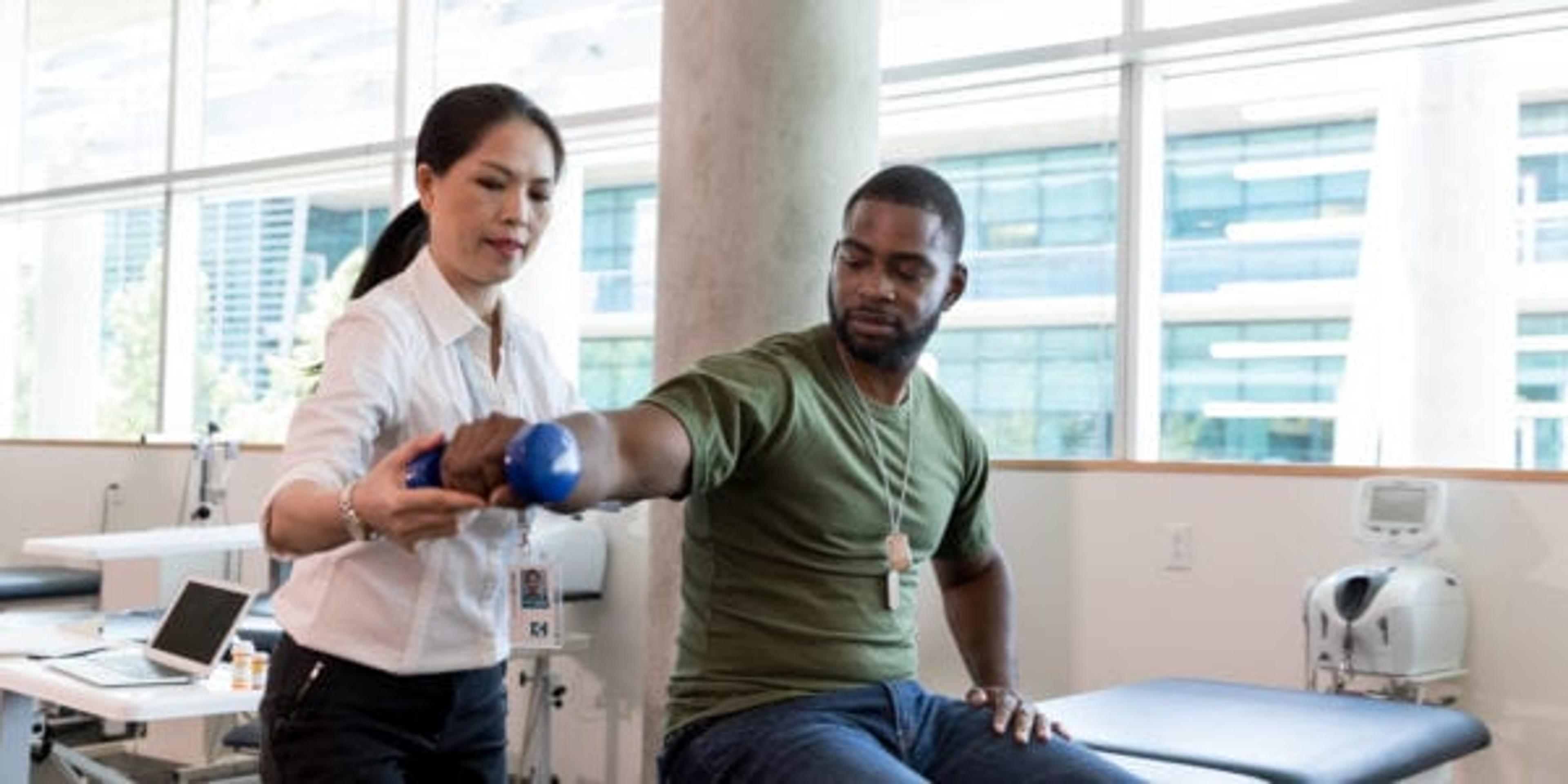Recovering from a Fitness Injury: When a Physical Therapist Can Help
Shandra Martinez
| 3 min read

A lot of workout injuries can seem like only an annoyance at first. Maybe you felt a twinge in your lower back during that last intense cardio session, or you dismounted from your bike after spin class to find your right knee was a little swollen and tender to the touch.
Heading down the ice-and-acetaminophen route is often the first step for many people thinking they need a quick fix. But if a fitness injury is serious enough to necessitate a visit to your doctor’s office, you might discover that physical therapy sessions are recommended to get you back to the level of your previous exercise routine.
Physical therapy can help people recover more quickly from an injury, regain movement, and even assist them in managing pain and chronic conditions. It’s no longer considered a niche medical service, but instead is often included as part of a treatment plan when someone is dealing with an injury or health condition.
In 2019, there were nearly 260,000 physical therapists treating patients in the United States, according to federal Department of Labor data. And that number is expected to grow at a quick pace – by up to 18% – over the next decade.
When fitness-related injuries occur, a physical therapist can work with you to offer a personalized plan of stretching and other exercises designed to target and help heal a specific area. Once they know what your exercise level was before the injury, a therapist can design a plan to get you back to that baseline. You might be able to receive help virtually. Many physical therapists are working online now and offering telemedicine options. You can learn more at the American Physical Therapy Association.
How to Prevent a Fitness Injury
The American Physical Therapy Association has put together some tips to help people make their workouts safer and their post-exercise recovery time easier. Here are a few:
Stretching: Once you’re done with your workout, don’t forget to stretch. It’s important if you want to stay flexible. If you’re doing static stretching – like a bicep or hamstring stretch targeting a specific muscle group – hold the stretch for at least 30 seconds.
Use a foam roller: This popular and portable self-massage tool can be used during a break in your workout to ease any tight areas of your muscles. You can roll it over your muscles, or lay on your back, leg or other body part on top of the roller to loosen any muscles.
Rest, Ice, Compression, Elevation: Minor sports injuries should always start being treated with the RICE method. This can especially be helpful if there is any pain or swelling around a knee, ankle or shoulder. If the problem does not clear up on its own after a few days, check in with your health care provider.
Mix up your workouts to stay healthy: As much as you might love mountain biking, you’re going to want to pick another exercise you like so you can rotate them in your workout routine. Performing one type of physical activity all the time – swimming, running, cycling – can lead to overuse injuries. So look for balance. If you love your cardio workout, find a good yoga class to improve your flexibility, or add in some weights for strength training.
Related:
Photo credit: Getty





